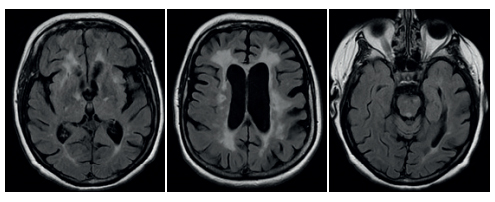Resolution of an online meeting of the Volga Federal District experts on the EMPEROR-Reduced trial “A new era in the treatment of patients with HF. From EMPA-REG OUTCOME to EMPEROR-Reduced trial”
Heart failure (HF) is an important problem in Russia due to increase in the incidence and prevalence, which are observed despite the combating cardiovascular diseases (CVDs) at the state level. According to the EPOCHA-CHF epidemiological research program, 7% of Russian population suffers from HF, and the proportion of patients with severe HF (class III-IV) has continued to grow steadily over the past 18 years [1][2]. The absolute number of patients with HF is increasing due to an increase in life expectancy of population and improvement of treatment methods for patients with CVDs and diabetes [3][4].
Despite significant advances in the treatment of HF patients, in actual clinical practice, CH-related mortality remains high [2][5]. It is known that HF increases the mortality rate of patients by 5-17,8% per year, depending on severity of HF and comorbidity, with a significant increase in death risk with a combination of HF and diabetes [3].
Experts from around the world estimate the cost of managing patients with HF as high, especially in the presence of rehospitalizations [6-8]. According to the American Heart Association, more than half of all the costs of managing HF patients accounted for hospitalizations for decompensated HF [9][10]. Unfortunately, accurate accounting of HF burden in Russia is impossible, because in outpatient practice, HF is not taken into account, but during hospitalization it is regarded as a complication of various diseases, and coronary artery disease most often becomes the leading ICD-10 code in this case. According to practical study in Russia, up to 78% of patients are re-hospitalized within two years of follow-up [11].
Hospitalizations not only increase the cost of managing HF patients, but are also an important endpoint of clinical trials, because serve as an indicator of a worsening prognosis and an increased death risk in HF patients [12]. Patients who are hospitalized once every 6 months or 2 times a year, are regarded by European experts as a target group for intensification of HF therapy [13].
Progressive deterioration of renal function is an important predictor of poor prognosis both for patients with CVDs and CF and for patients with type 2 diabetes. The need to prevent its deterioration in patients with HF and type 2 diabetes, which results in reduction in the risk of cardiovascular events, is beyond doubt [14-16].
The survival rate of patients with HF, especially with prior hospitalizations, remains unsatisfactory [17][18], which requires the widespread practical introduction of innovative treatment methods. Such an innovative treatment for patients with high cardiovascular risk, including HF, is sodium glucose cotransporter type 2 (SGLT2) inhibitors, which implements a multidisciplinary approach to reducing the risk of cardiovascular death, readmission due to heart failure (HF), and improving renal function, which was demonstrated in the studies Empagliflozin Cardiovascular Outcome Event Trial in Type 2 Diabetes Mellitus Patients (EMPA-REG OUTCOME) and Empagliflozin Outcome Trial in Patients with Chronic Heart Failure and a Reduced Ejection Fraction (EMPEROR-Reduced) studies [12][19-22].
Meeting results
On November 6, 2020, an online meeting of the Volga Federal District experts was held, dedicated to the EMPEROR-Reduced multicenter study, which were first presented at the virtual congress of the European Society of Cardiology on August 29, 2020. The EMPEROR-Reduced study evaluated the safety and efficacy of adding empagliflozin 10 mg versus placebo to therapy in HF patients with reduced left ventricular ejection fraction (LVEF).
In introductory remarks, Professor A.S. Galyavich drew attention to the staging of basic therapy prescribed in current guidelines on HF and suggested considering SGLT2 inhibitors use for HF with reduced EF (HFrEF).
In the report of Professor N.R. Khasanov “Cardiovascular outcomes in studies on SGLT2 inhibitors”, an analysis of studies on hypoglycemic medications from the point of view of cardiovascular safety was carried out. It was emphasized that empaglif lozin is the only SGLT2 inhibitor that proved to reduce cardiovascular mortality in patients with high cardiovascular risk in the EMPA-REG OUTCOME study, as well as in subgroups [12]. The following are data from a Empagliflozin Comparative Effectiveness and Safety (EMPRISE) trial, which showed that initiation of therapy with empagliflozin compared with dipeptidyl peptidase-4 inhibitor sitagliptin in patients with type 2 diabetes with and without prior CVD was associated with a decrease in the risk of hospitalization due to HF [23]. The report emphasized the high safety of empagliflozin 10 mg in patients with HF, regardless of 2 diabetes [22]. Taking into account these data, the attitude towards SGLT2 inhibitor as a class of hypoglycemic drugs should be reviewed and their place in the treatment of CVD should be determined.
The report of Professor E.I. Tarlovskaya contained exhaustive information on the EMPERORReduced study, which included 3730 patients with class II-IV HF and LVEF ?40%. It demonstrated a significant favorable multifactorial effect of empagliflozin regardless of diabetes presence: compared with placebo, a decrease in the risk of cardiovascular death or HF-related hospitalization by 25% (relative risk (RR), 0,75; 95% confidence interval (CI), 0,65- 0,86; p<0,001), total number of hospitalizations due to HF by 30% (RR, 0,70; 95% CI, 0,58-0,85; p<0,001), rate of renal function decrease (absolute difference in the decrease in estimated glomerular filtration rate (eGFR), 1,73 (95% CI, 1,10-2,37 ml/ min/1,73 m2 in year; p<0,001) [22]. The EMPERORReduced trial demonstrated that, in groups of HFrEF patients with different initial renal function, empagliflozin reduced the risk of combined renal endpoint (chronic dialysis or kidney transplantation, or a sustained decrease in eGFR by 40% or more or a sustained decrease in eGFR <15 ml/min/1,73 m2 in patients with baseline eGFR ?30 ml/min/1,73 m2 or <10 ml/min/1,73 m2 in patients with baseline eGFR <30 ml/min/1,73 m2) by 50% (RR, 0,50; 95% CI, 0,32-0,77) and significantly reduced the rate of chronic kidney disease (CKD) progression regardless of diabetes presence. The EMPEROR-Reduced study demonstrated that in patients with HFrEF, the incidence of adverse events with empagliflozin or placebo did not differ, regardless of diabetes presence, with the exception of uncomplicated genital tract infections (1,7% vs 0,6%) [22]. It should be noted that patients with GFR <20 ml/ min/1,73 m2 were excluded from the study, i.e. for the first time in the history of studies SGLT2 inhibitors, patients with GFR <30 ml/min/1,73 m2 were included. According to predefined analysis, the effectiveness of empagliflozin in reducing cardiovascular death or hospitalization due to HF was maintained in all subgroups. E.I. Tarlovskaya disclose the updated position of ESC Heart Failure Association on SGLT2 inhibitors dated October 17, 2020, according to which dapagliflozin or empagliflozin are recommended to reduce the combined risk of hospitalization due to HF and cardiovascular death in patients with HF symptoms and decreased LVEF, already receiving medication therapy and regardless of type 2 diabetes presence [24].
The report “Statistical analysis of EMPERORReduced trial — what conclusions should be taken into account for practical medicine” by Professor S. R. Gilyarevsky presents a detailed analysis and comparison of studies of DAPA-HF and EMPEROR-Reduced studies in patients with HFrEF. S.R. Gilyarevsky drew attention to higher severity of patients in the EMPEROR-Reduced study, as well as to an additional factor that was included in primary endpoint in the DAPA-HF study — urgent visit in case of heart failure worsening [25]. These facts may have influenced the rate of data accumulation on drugs efficacy. However, the main outcomes clearly showed that dapagliflozin and empagliflozin have similar efficacy. It was noted that in the EMPEROR-Reduced study, patients were 2 times more likely to receive more modern therapy with an angiotensin receptor-neprilysin inhibitor than in the DAPA-HF study, which did not prevent empagliflozin from showing effectiveness. An important difference between two studies is that in the EMPEROR-Reduced, a secondary nephroprotection point was established in patients with HFrEF, while the minimum GFR for inclusion in EMPEROR-Reduced was at 10 ml/min/1,73 m2 lower than DAPA-HF.
In the report “What SGLT2 inhibitor effects are most significant in the treatment of HF?”, N.G. Vinogradova emphasized the importance of hospitalizations due to heart failure as a marker of an unstable HF course and an event that increases the death risk in patients with HF and increases the population-based economic burden of HF. Therefore, the analysis of such an endpoint as HF-related hospitalization is not only of scientific interest, but also of great practical value. Novel methods of HF treatment, which have proven to reduce the hospitalization risk due to heart failure, will contribute to stable clinical course of HF, improve the prognosis and reduce the healthcare costs. It is very important to use medicines that give rapid results. For example, a subanalysis of the EMPEROR-Reduced study showed that the benefit of empagliflozin in the prevention of hospital readmissions first reached significance compared with placebo as early as 12 days after randomization, and the significance remained throughout the study period [26]. Moreover, the risk of rehospitalization using empagliflozin therapy decreased regardless of HF etiology, glycated hemoglobin level and diabetes status. About one third of HF patients who underwent hospitalization for heart failure had stage 3-5 CKD [27]. Therefore, the maintenance of renal function, proven in the EMPEROR-Reduced study, is of great practical importance.
In the report “Cardiorenal continuum and HF. Results of clinical trials and their relevance to clinical practice”, Professor A.M. Shutov emphasized the importance of including patients with GFR up to 20 ml/min/1,73 m2 in the EMPEROR-Reduced trial and including more patients with GFR <60 ml/ min/1,73 m2. A.M. Shutov noted that at present, in addition to this study, there is no evidence that any cardiac medications have a positive effect on patients with stage 4-5 CKD. It is very important that patients with HF and GFR of 30-45 ml/min/1,73 m2 in the study had an excellent result regarding the primary endpoint. Moreover, according to the EMPEROR-Reduced subanalysis, a reduction in the primary endpoint risk for empagliflozin therapy was observed in both patients with and without CKD [28]. The nephroprotective mechanisms of SGLT2 inhibitors are multifactorial, but the leading one is a decrease in glomerular hyperfiltration. Empagliflozin has shown a nephroprotective effect, slowing the progression of renal function decline in patients who initially had CKD and in those without CKD. Importantly, empagliflozin therapy was not associated with an increased risk of acute renal injury and hyperkalemia compared to placebo. Empagliflozin will definitely implements in nephrology practice, since it reduces the incidence of renal events in HF patients with/without CKD, as well as across the entire spectrum of renal filtration function, including the subgroup of patients with GFR up to 20 ml/min/1,73 m2 with a low incidence of adverse events.
The final report by Professor S.V. Villevalde “Patients with heart failure — a target group for programs aimed at reducing mortality from cardiovascular diseases” identified HF as an important modern problem of Russian cardiology, and HF patients as a target group for interventions directed to reduce cardiovascular mortality [29]. It is necessary to develop novel approaches to the treatment and monitoring of morbidity and mortality in this category of patients. Attention should be paid to the development of specialized healthcare for HF patients. It is advisable to change the algorithm for the treatment of HFrEF, where SGLT2 inhibitors should be prescribed as soon as possible to quickly and effectively reduce the risks of adverse outcomes.
Discussion
During discussion, all the experts were asked the question: at what stage of therapy selection should patients with HFrEF be prescribed with empagliflozin?
Almost unanimously, experts spoke in favor of including SGLT2 inhibitors into standard therapy of HFrEF with other medications (renin-angiotensinaldosterone system inhibitors, angiotensin receptor-neprilysin inhibitors, beta-blockers and mineralocorticoid receptor antagonists). Moreover, it should be recommended to prescribe SGLT2 inhibitors to all patients with HFrEF, regardless of the severity and as soon as possible. Expansion of standard therapy for HFrEF through the introduction of SGLT2 inhibitors will make it possible to quickly and effectively improve the prognosis of patients.
Second question: is it time to give up on the stepwise approach to HFrEF therapy? Experts expressed the opinion that strict staging in the appointment of standard HF therapy may limit the use of effective SGLT2 inhibitors, because, in a physician’s mind, these drugs should be prescribed only for severe HF patients. The EMPEROR-Reduced study also included stable patients with reduced ejection fraction, which had a pronounced advantage over placebo. Most experts supported idea of parallel and simultaneous prescription of SGLT2 inhibitors with other standard medication for HF.
Third question: Is it possible to recommend empagliflozin not only “to reduce cardiovascular mortality and HF-related hospitalizations”, but also according to the indication “to slow down the CKD progression”? Experts supported this indication for empagliflozin prescription, given the significant efficacy and safety of this drug among patients with HF, regardless of prior CKD.
Based on the results of reports and discussions held during the meeting, a decision was made:
When updating the current clinical guidelines on heart failure, authors should consider inclusion of SGLT2 inhibitors (dapagliflozin, empagliflozin) in the list of standard HFrEF therapy with the possibility of simultaneous prescription with other drugs, regardless of the presence of type 2 diabetes.
Чтобы читать статью войдите с логином и паролем от scardio.ru
For citation
Villevalde S.V., Galyavich A.S., Vinogradova N.G., Volodina E.N., Gaisin I.R., Gilyarevsky S.R., Grekhova L.V., Guryanova Yu.A., Guseva P.S., Duplyakov D.V., Ezhov A.V., Zakirova N.E., Zolotova Yu.V., Isakov A.V., Kanysheva S.V., Kim Z.F., Kuzmin V.P., Markiyanova S.S., Pomosov S.A., Rebrov A.P., Tarlovskaya E.I., Tolstov S.N., Fomin I.V., Khasanov N.R., Shutov A.M. Resolution of an online meeting of the Volga Federal District experts on the EMPEROR-Reduced trial “A new era in the treatment of patients with HF. From EMPA-REG OUTCOME to EMPEROR-Reduced trial”. Russian Journal of Cardiology. 2021;26(2S):4562. https://doi.org/10.15829/1560-4071-2021-4562
Copy
















